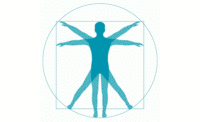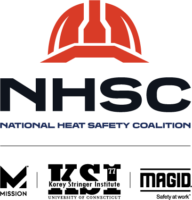Although 2022 was recorded as one of the hottest years ever with a global temperature of approximately 1.15°C above pre-industrial levels (1850-1900), the next five years are expected to be even hotter. According to the World Meteorological Organization (WMO), there is a 66% chance that the global temperature will exceed 1.5°C above pre-industrial levels for at least one year between 2023 and 2027. With climate change in mind, it is imperative that industries evaluate current heat safety practices and explore the potential of core body temperature-sensing wearables that accurately predict heat strain, improve worker productivity, and mitigate adverse heat-related health outcomes.
The science behind heat strain is rooted in the body’s capacity to thermoregulate. As an individual is subject to heat stress, which is defined as the net heat exposure from active heat sources (e.g., machinery), metabolic heat, and the ambient environment, their body responds to maintain a stable and functional body temperature. However, if the body is unable to get rid of heat quickly enough, the individual is at risk of developing a heat-related illness (HRI) – a manifestation of heat strain.
Heat strain is affected by a multitude of personal factors and is therefore an individualized physiological response. These factors range from those that cannot be controlled (e.g., age, genetics, pre-existing health conditions, and medications) to those that can (e.g., fitness, acclimatization, hydration, and sleep). Despite heat strain’s variability by individual, it is 100% preventable through timely intervention.
Current heat safety practices are based on standards defined by medical guidance and, where there’s legislation, good practices are enforced by governments. In the United States, the National Institute for Occupational Safety and Health (NIOSH), the American Conference of Governmental Industrial Hygienists (ACGIH), and other leading organizations set standards while enforcement is managed by the Occupational Health and Safety Administration (OSHA), a regulatory agency of the U.S. Department of Labor.
Other countries are also taking proactive measures against extreme heat. In the UAE, there is an Occupational Health and Safety Management System (OHSM) National Standard enforced by the Ministry of Labour. In Australia, each territory has its own regulatory body overseeing worker health and safety.
As means of prevention, frontline workers are educated on the signs and symptoms of heat strain, encouraged to take breaks, and provided with water and electrolyte products for rehydration. Simultaneously, interventions are set in place for when HRIs do occur. These involve moving to designated cooling areas, removing excess clothing and personal protective equipment (PPE), and being evaluated by a medical professional. Although effective, these practices are broad and are not necessarily tailored to each person. Herein lies the missing ingredients: real-time data and prevention.
Physiological monitoring through wearable technology can provide risk assessments that are both timely and individualized, improving the effectiveness of pre-existing policies and interventions. Some wearable solutions can provide real-time alerts to workers when they are getting too hot and improve the overall management of heat stress among employees. In addition to alerting device wearers, safety managers are able to monitor workers on the ground. The data collected provides insights that can inform future decision-making.
While wearables like this exist, one of the hurdles that companies face is improving worker adoption of heat safety technology. Research studies have shown that certain models are effective in eliciting behavioral change — one of which is the Extended Parallel Process Model (EPPM). This model has two components: (1) threat appraisal and (2) efficacy appraisal. The EPPM predicts behavioral change outcomes based on the degrees of threat and efficacy appraisals.
Threat appraisal involves the assessment of a threat. In the case of heat strain, an individual who recognizes their susceptibility to and the severity of HRIs will be more likely to adopt wearable technology to prevent the threat. This threat needs to be understood acutely and over the long term. Efficacy appraisal, on the other hand, involves the assessment of an intervention. If an individual perceives the technology to be easy to use and effective in preventing HRIs, they will feel empowered and in control of the threat, prompting increased adoption of the solution. Using this model, companies must introduce the threat of HRIs while simultaneously introducing an intervention to mitigate the threat. A study by Basil et al. (2013) applied the EPPM to various workplace safety messages and identified that a threat approach may be warranted, at least with a male target audience and only when combined with high levels of efficacy.
Here is a high-level overview of the threat at hand. Heat exposure and exertion are unavoidable occupational hazards. Even in cooler weather or air-conditioned indoor environments, HRIs can still occur solely due to the metabolic heat generated by the body. According to the New York Times, “By 2050, nearly half the world may live in areas that have dangerous levels of heat for at least a month...” This does not bode well for frontline workers as consecutive high-heat workdays can further increase the risk of HRIs. Therefore, employers must educate workers on their susceptibility to HRIs, the short-term consequences (e.g., heat cramps, heat stroke, rhabdomyolysis) and long-term effects (e.g., neurological damage, cardiovascular disease, kidney disease). The effects of heat strain on the body are compounding.
However, fear is not enough to elicit behavioral change. Employers must also offer their workers a solution to the problem. Efficacy appraisal can be improved by providing concrete and easily digestible data on the success of the wearable in preventing HRIs. Positive personal testimonials from workers who have used the technology will also improve worker adoption. The rationale behind this type of narrative is the concept of a reference group. Shared experiences improve the impact of these stories and better capture the attention of the target audience.
Wearable technology, with its continuous monitoring and ease of use, is the future of heat safety. The simultaneous use of broader and individualized interventions to target those vulnerable to heat will not only improve worker productivity but also more effectively prevent injuries and deaths on worksites while improving quality of life and longevity.


